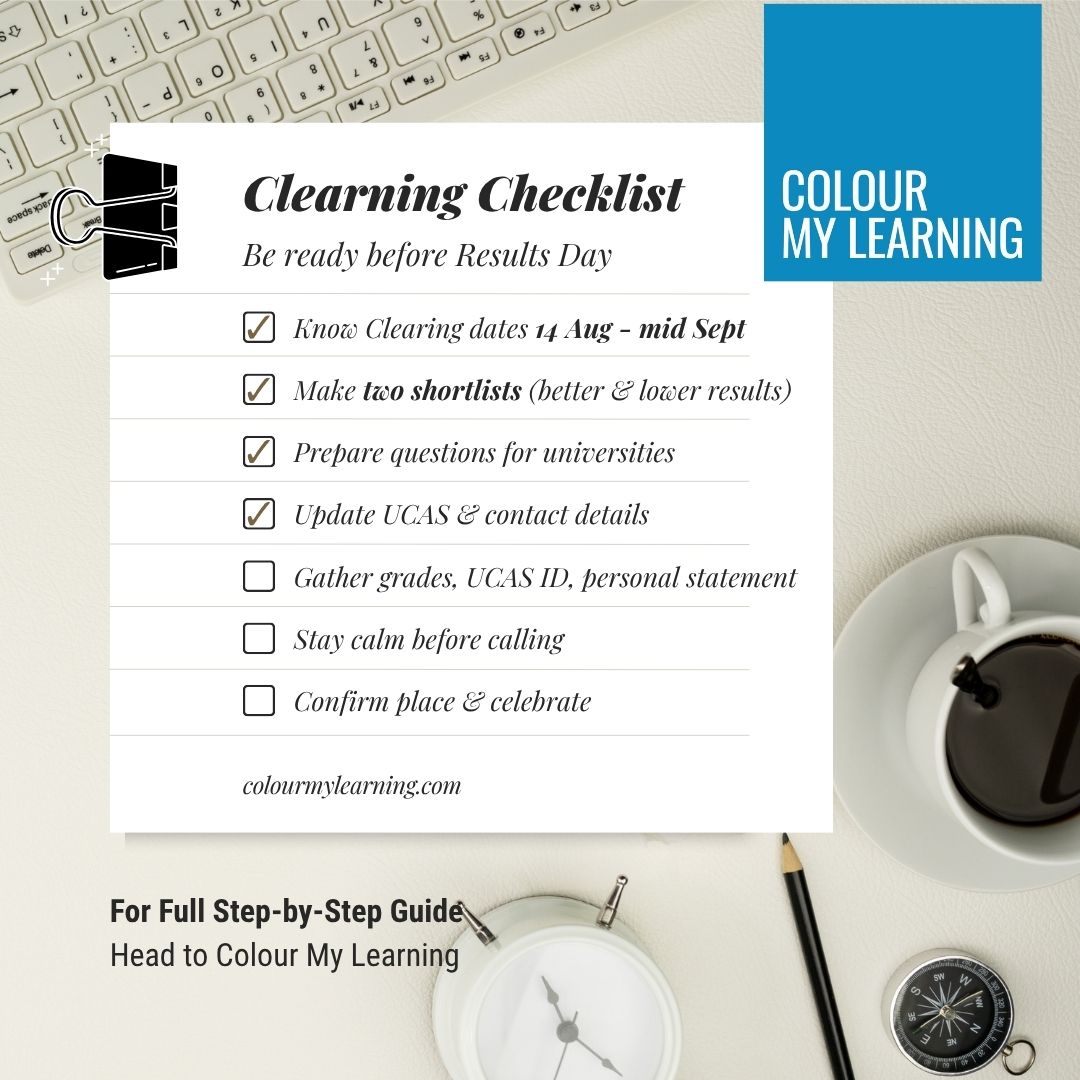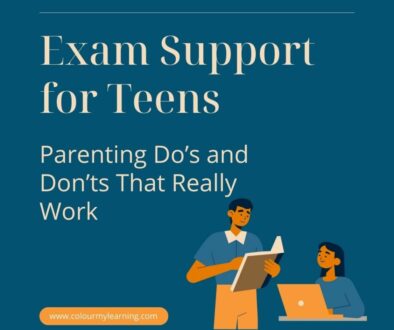How to Prepare for Clearing: Step-by-Step Guide for A-Level Students
Clearing is part of the UCAS system that helps students find available university places after results are released. It’s your opportunity to secure a course if your plans have changed, your results aren’t quite what you expected, or you’ve only just decided to apply. Here’s a step-by-step guide on how to prepare for clearing.
Results day can feel intense. Even more so, if you find yourself needing to go through clearing. Clearing moves quickly and some places fill within hours. But being prepared will give you a real advantage. Whether you’re reading this before results day or you’ve just opened your envelope, you can follow these steps to stay calm, take control, and find a course you’re genuinely excited about.
If results day feels overwhelming, visit our Mental Health and Wellbeing Hub for practical support and resources.”
“Clearing isn’t a backup. It’s a second chance at your first choice.”
1. Understand How Clearing Works
The more you understand the process, the less stressful it will feel on the day. Clearing opens on A-level results day and continues until mid-September. It’s designed for students who:
- Didn’t receive any offers
- Didn’t meet the conditions of their offers
- Declined their offers
- Applied after the deadline (usually around 30 June)
If you already have your results, you can start contacting universities straight away. Thousands of students use Clearing every year to secure places on courses they love — it’s a normal part of the journey for many.
2. Research Your Shortlist in Advance — For Both Scenarios
You may be reading this before results day, without knowing exactly how things will turn out. That’s why it helps to plan for more than one outcome. By having two shortlists, you’ll be ready to move quickly and confidently.
If your results are higher than expected Look for courses or universities with higher entry requirements that you might now qualify for. This could be your chance to apply for something that felt just out of reach before.
If your results are lower than expected Identify courses with requirements that match your predicted grades and a few slightly lower, but still exciting, options. This ensures you have strong, realistic choices if your first plan changes.
For each course, note:
- Course name and code
- University name and location
- Entry requirements
- Contact number for Clearing
Aim for at least 5–8 options for each scenario so you’re ready to act whichever way the morning goes.

3. Prepare Your Questions
When you get through to a university, the conversation can feel fast. Taking a moment now to write down your questions means you’ll be able to stay calm and gather the information you need to make the right decision. Remember — this is your opportunity to make sure the course is a good fit for you.
Questions to ask could include:
- What is the course content and structure?
- Are there opportunities for work placements or study abroad?
- What accommodation options are available and how much do they cost?
- Are there scholarships or financial support options?
- How soon do I need to confirm my decision?
4. Update Your UCAS and Contact Details
Nothing slows you down on results day like missing information. A quick check now could save you time and stress later. Log into your UCAS account and check:
- Your personal details are correct
- Your contact number and email are up to date
- If you want a parent/guardian to speak on your behalf, they are listed as a nominated contact
This way, if you need someone else to help make calls, universities can speak to them directly.
5. Gather Your Key Information
Having everything in one place will make results morning far smoother. You’ll be able to make calls quickly, answer questions confidently, and track your progress easily.
Prepare:
- Your UCAS Personal ID
- Your grades (and module/unit breakdown if possible)
- Your personal statement (have it open on your computer or printed)
- Your two shortlists of courses with contact details and codes
- A notebook and pen to record who you spoke to and what was said
“Clearing moves quickly — preparation keeps you in control.”
6. Stay Calm and Start Calling
Once you’ve checked UCAS Track and know you’re in Clearing, take a moment to breathe before you pick up the phone. Staying calm will help you make clear, confident decisions. If you need extra support, you’ll find calming strategies in our Mental Health and Wellbeing Hub.
When you’re ready:
- Call your shortlisted universities
- Be polite, confident, and ready to give your grades immediately
- Ask your prepared questions
- Write down every offer you’re given
- Don’t feel pressured to accept the first option — but do be aware that places can go fast
If you need a moment to gather your thoughts, take a break before calling. You’ll find calming strategies and confidence boosters in our Mental Health and Wellbeing Hub.”
7. Confirm and Move Forward
Once you’ve accepted an offer in UCAS Track, you can start looking ahead to the exciting next chapter.
- Contact the university to confirm accommodation arrangements
- Read any emails they send you carefully. There may be forms or deadlines to meet quickly
- Let your support network know, and celebrate your next step!
Here is your checklist!

Helpful Links
- UCAS Clearing Advice from University Staff
- UCAS Clearing – What you need to know
- UCAS Course Search
- Should You Take a Gap Year? How to Decide and Make It Work
- Why Your Exam Results Don’t Define You
- Mental Health and Wellbeing Hub
Find the Right Place for You
Clearing is not about “settling” — it’s about finding the right fit for you right now. For many students, it becomes the start of a brilliant university experience they might never have considered otherwise.
Take a deep breath, follow the steps, and trust that you can make a decision you’ll feel good about. The goal isn’t just to get a place — it’s to find the right place for you.
If you find this information helpful, please share it on.











